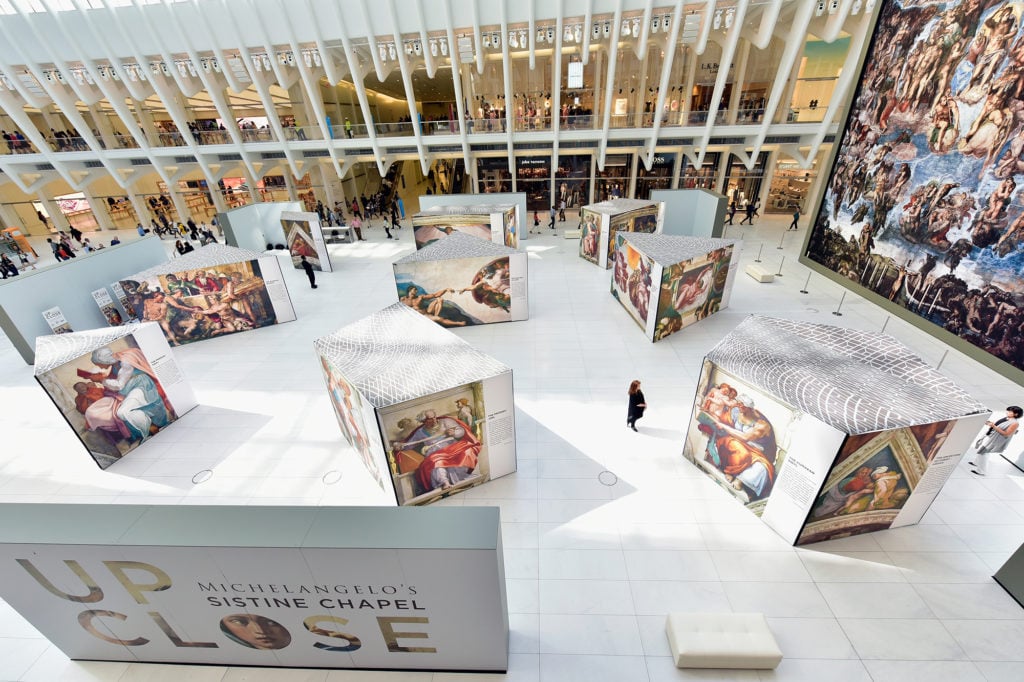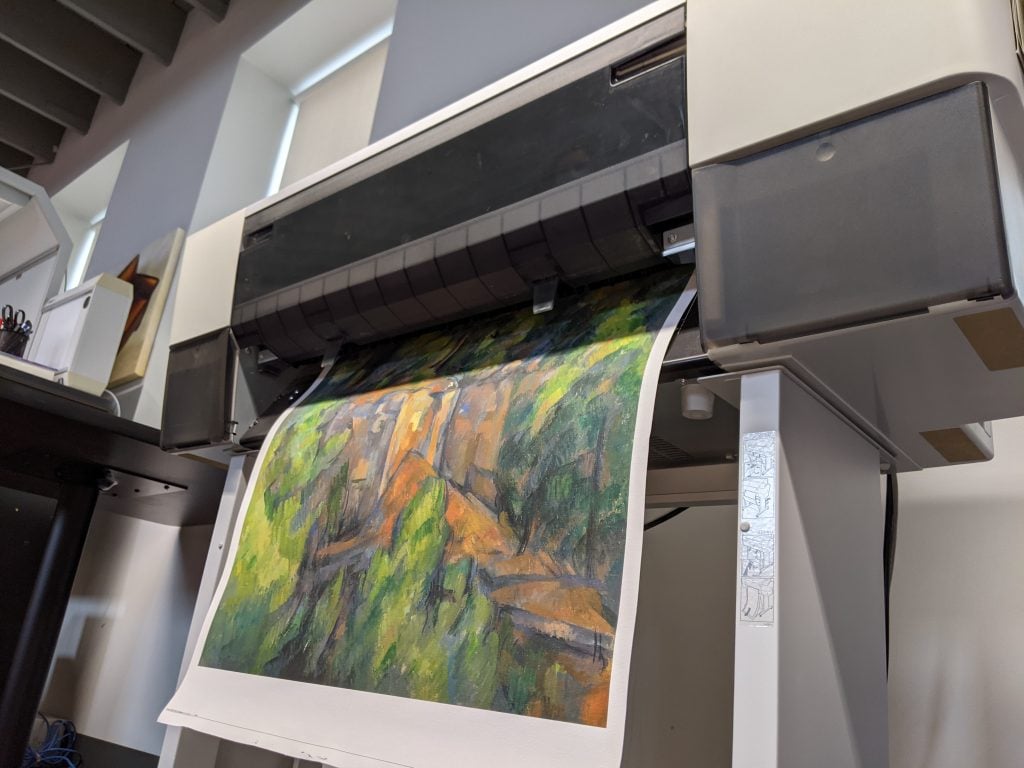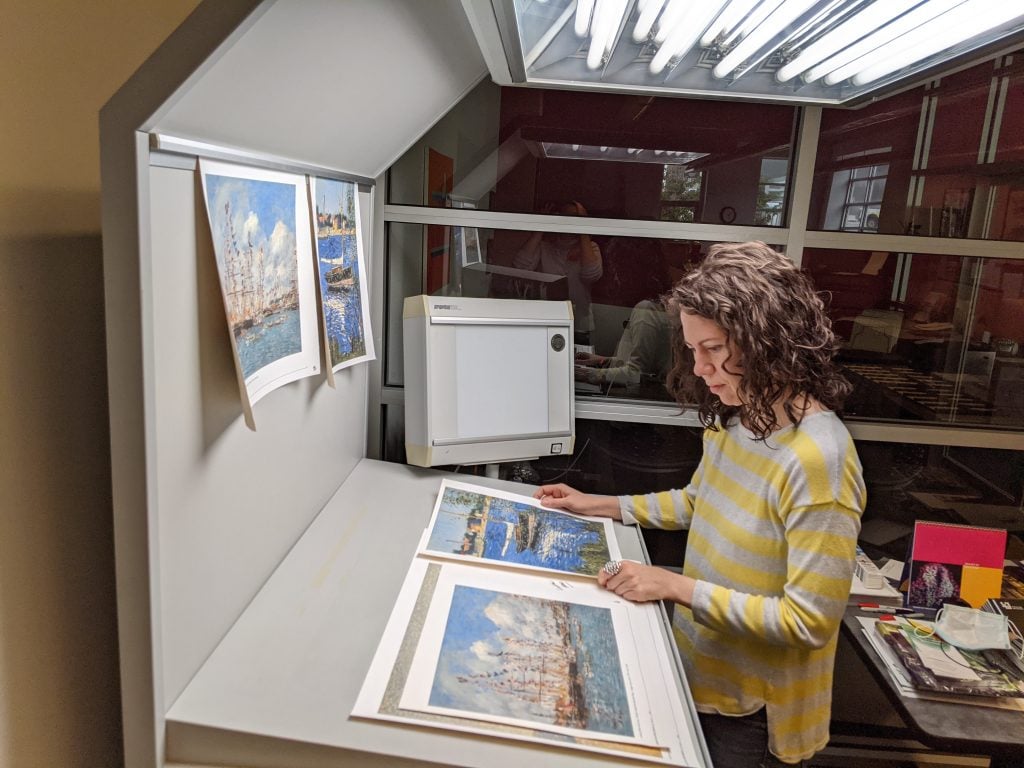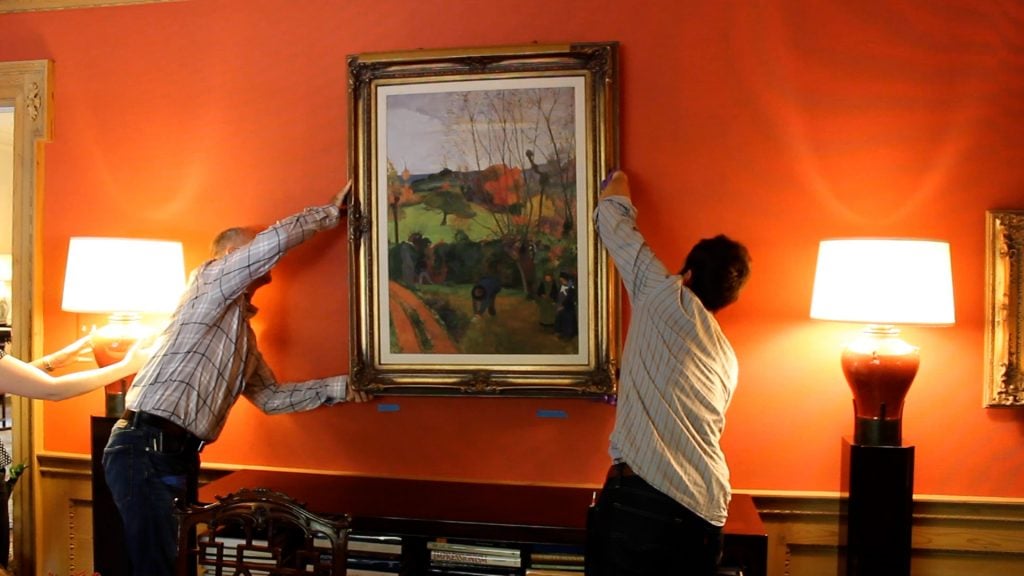When curator Frederick Ilchman first arrived at the Museum of Fine Arts, Boston in 2001, he found a huge photograph of a Claude Monet water lily painting hanging on a storeroom rack. The reproduction, surrounded by an attractive, wooden frame, had stood in for the genuine Monet on a collector’s wall in the late 1990s, while the original was on loan for an exhibition.
“From more than about 10 feet away, it looked fairly convincing—though the surface was far more glossy than an Impressionist painting,” said Ilchman, now the museum’s chair of European art, who admitted to being fooled by similar facsimiles in other donor’s homes. “One doesn’t expect to find a framed poster amid valuable originals,” he explained.
Since at least the 1980s and likely earlier, museums have furnished some collectors with framed reproductions of the art they lend, according to curators and specialists. Ilchman figures the tradition may have started when Italian churches required facsimiles of art sent on loan to maintain chapel coherence.

“Up Close: Michaelangelo’s Sistine Chapel” at the Oculus at Westfield World Trade Center. Courtesy of Eugene Gologursky/Getty Images for Westfield.
“The cost of providing a full-scale color photograph of a Caravaggio or a Tintoretto is a line item among the costs of borrowing,” Ilchman said. “If a potential gap on a wall will make the owner reluctant to lend, a photograph can fill the spot for the run of the exhibition.”
The existence of such copies came up during a press event at Kansas City’s Nelson-Atkins Museum of Art in 2017, which celebrated Henry Bloch (the co-founder of accounting firm H&R Block, who died two years later) and his donation of 29 paintings for the new Bloch galleries.
“When I gave them the paintings, they gave me the same paintings. They made replicas,” the 94-year-old collector said during an interview at the event, noting that the latter “look the same or even better than the originals.”
Experts say copies that museums create for the benefit of collectors are clearly marked as such, and they serve a useful purpose: getting the real pictures in front of a wider public sooner.

Collector Henry Block with two of the paintings he donated to the Nelson-Atkins Museums of Art. Photo: Menachem Wecker.
“The real thrill for Henry was he got to see his dreams come true. He got to see his collection on view at the museum while he was still alive,” said Steve Waterman, deputy director of design and experience at the Nelson-Atkins, who worked on creating copies of the Bloch donations. “The whole goal was to make Henry’s house, which was something he spent a lifetime creating, not feel like it was getting turned upside down in the last years of his life.”
When the Nelson-Atkins took on the project, it was aided by an extensive in-house photography team, with the necessary cameras, computers, and other equipment. Very long exposures provided depth and achieved an almost microscopic level of detail, Waterman said, noting that colleagues in the photography and conservation departments collaborated over several years to create the images.
The results were neither hyper-real nor over the top, according to Waterman. “Henry—where his eyesight was at the time—he would rub them with his hand, because it almost looked like the thickness of the paint on the reproduction,” he recalled.
The museum worked with two local businesses—commercial printer MPress and framer Ward & Ward—to create replicas on paper with a canvas-like texture.

High-quality reproductions of Bloch’s collection were made for the museum and the donor. Photo: Laura Holthus.
“So much of the whole process of doing this for people is on the front end. It’s not putting ink on paper. That’s, frankly, the easier part of it,” said Ralph Myers, manager of MPress.
Reproductions are also becoming increasingly common when heirs all want a single work of art, according to Myers, who recreated a valuable 8-by-10-foot painting (with the artist’s permission) for two people squabbling over a divorce. “We satisfied their divorce problem,” he said. “That and the dog were the only things that mattered, evidently.”
The scale of the Nelson-Atkins commission, which took about a year, was a once-in-a-lifetime project for Myers and his colleagues, although they often print artwork. He has found that watercolor paper—which many clients request—doesn’t hold ink well and comes out crisper and brighter than the original. “It’s really hard to get the subtleties and the softness on the watercolor paper,” he said.
After narrowing down several paper stocks, MPress made quarter-sized test sheets to see how the Bloch works would reproduce. The staff ended up using two kinds of ink, one regular water-based and the other ultraviolet.

Mpress employee Amanda Hewitt compares color corrected reproduction samples. Photo: Laura Holthus.
The costs, even for high-quality work, didn’t break the bank. “I had the opportunity to charge a huge price to do this project considering the importance of it, but I didn’t,” Myers said. “We could do a credible job on a moderately-sized painting for between $500 and $1,000.”
Tim Ward, of Ward & Ward Art Framing and Gallery, also finds that framing jobs can be done economically. For the Bloch donation of Pierre-Auguste Renoir’s pastel drawing Pinning the Hat (1890 or 1893), which is roughly 26 by 20 inches, he and colleagues lined a frame provided by the Nelson-Atkins with silk and used museum-grade glass to emulate the appearance of the real work. “The original Renoir was a pastel, so it would have been seen under glass,” he said. The total cost was $470.
“Pricing and framing is size-driven,” Ward added, although the Bloch reproductions were “kind of a la carte, because we were maybe doing one with a liner and one without.” Liners, which help fit works into frames, are like “visual commas,” he said. They can be gilded or wrapped in fabric and act as “softening devices” around the exterior edge of the painting.
“If you’re mounting and spraying it [with varnish], and let’s say it was a 24-by-30-inch work, you might be looking at something in the $500 and $800 range,” Ward said. “If you were using a recreated frame and real gold and it had carving, you could be looking at three times that amount.” The replicas made for Bloch were done more on the efficient side, he added. “I’m going to say they ranged from $600 to $1,000 a piece.”
Ward agreed with Myers that these sorts of reproductions are increasingly common. “It’s happening more now, probably because we have the technology to make it happen,” he said. “There are some people who fear it, but in my opinion, if the ultimate reward is that the community here gets the original, and the donor gets to still enjoy his pieces.”
For others venturing into the same sort of project, Ward stressed the importance of gathering the right group of people to collaborate on all the different components. And Waterman, of the Nelson-Atkins, offers colleagues at other institutions this advice: “If it’s a deal closer, I would recommend it wholeheartedly.”










